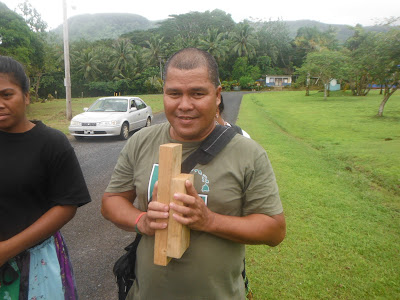Speed of sound

Michael Yarofaitoar on the clapping blocks Measuring the speed of sound deployed the approach taken last spring. The weather cooperated, clouds kept the sun from being too hot, yet rain did not fall. A couple future notes. The key to seeing the clap is start with arms at ninety degrees, boards angled to catch the light from the sky, flat face forward towards timers. The middle of the road is best, less visual background clutter. The clapper should be informed that cars behind them are a "no go" condition as the timers cannot always see the boards against the backdrop of cars. The timers need the pavement and fall hill as a backdrop. The clapper can and should get out of the road when traffic is present. The timers will understand what is happening. The clapper was up near the cement box for the power line to the well, slightly east of the crest used in prior terms. This worked better than I had hoped. I suspect the clapper could be even farther east, but intersection tra...




